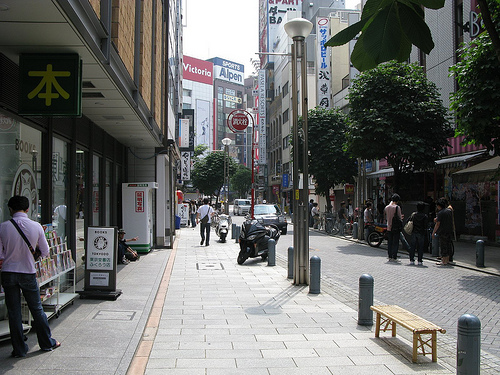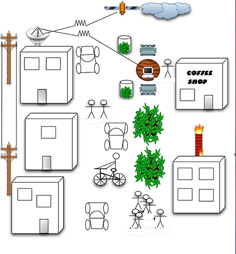Learning Woonerfs

Photo by Rob Ketcherside
Woonerf is the Dutch name for a “living street” in which the needs of car drivers are secondary to the needs of users of the street as a whole. It is a shared space designed to be used by pedestrians, playing children, bicyclists, and low-speed motor vehicles; becoming a public place for people instead of single-purpose conduits for automobiles. In a woonerf, vehicles may not impede pedestrians, who in turn may not unreasonably hinder the progress of drivers.
This self-reading street has its roots in design principles that emerged in the 1970s. By dynamically blurring the boundary between the street and sidewalks, woonerfs combine innovative paving, landscaping and other urban designs to allow for the integration of multiple functions in a single street—the neighborhood shares the road with slow-moving cars. This two-way interaction of people and cars becomes a virtuous circle as the busier the streets are, the safer they become; it seems that when you drive people off the street, that they become less safe.
Becoming a Learning Woonerf

Although Woonerf refers technically to residential streets, they have also become synonymous with a larger European planning trend called a shared space. Good design gives spaces multiple functions, thus training departments that serve a single or limited set of functions, hinder the organization through their wasted spaces.
By linking the full gamut of learning processes into a Learning Woonerf, the organization evolves from a linear learning function into a dynamic uninterrupted slew of learning connections. Thus, unlike a training department, which normally consists of a single space for training, a learning woonerf accounts for all the learning processes, from informal to formal—the organization truly becomes a learning organization rather than just an organization that simply does training.
And that is what this site helps to do—become a shared space for learning

